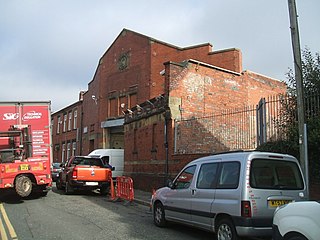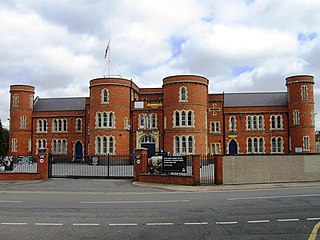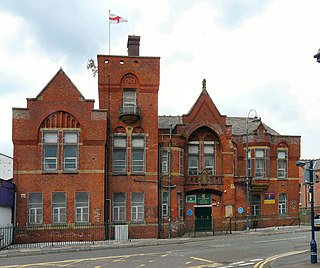
The Lancashire Infantry Museum, formerly known as the Queen's Lancashire Regiment Museum, is located at Fulwood Barracks in Preston, Lancashire, England. The museum claims to be "largest Regimental archive and the premier centre for military historical research in the North of England."
The Lancashire Regiment was an infantry regiment of the British Army that had a very short existence.
The Lancastrian and Cumbrian Volunteers was a Territorial Army unit of the British Army.

The Loyal Regiment was a line infantry regiment of the British Army that was in existence from 1881 to 1970. In 1970, the regiment was amalgamated with the Lancashire Regiment to form the Queen's Lancashire Regiment which was, in 2006, amalgamated with the King's Own Royal Border Regiment and the King's Regiment to form the Duke of Lancaster Regiment.

103rd Regiment Royal Artillery is part of the Army Reserve and primarily has sub-units throughout the Greater Manchester and Merseyside area of the North-West of England, in recent years it has extended its footprint to Wolverhampton, Isle of Man, Carlisle and Nottingham. Its purpose is to provide reinforcements for units that use the 105 mm L118 Light Gun.

Fulwood Barracks is a military installation at Fulwood in Preston, Lancashire, England.

Ardwick Green Barracks is a former military installation in Ardwick, Manchester.

Wellington Barracks was a military installation on Bolton Road in Bury, Greater Manchester.
The Bolton Rifles, later the 5th Battalion, Loyal North Lancashire Regiment, was a volunteer unit of the British Army from 1859 until 1967. It served on the Western Front during the First World War, and in the Far East during the Second World War, when one battalion was captured at the Fall of Singapore.

The Everton Road drill hall is a former military installation in Liverpool.

Londesborough Barracks is a military installation in Kingston upon Hull.

The Baron Street drill hall is a former military installation in Rochdale, England.

The Bridge Street drill hall is a former military installation in Macclesfield, Cheshire.

The Canterbury Street drill hall is a military installation in Blackburn, Lancashire. It is a Grade II listed building.

The Bath Street drill hall is a former military installation in Warrington, Cheshire.

The Clare Street drill hall is a military installation in Northampton, Northamptonshire. It is a Grade II listed building.

The Burlington Street drill hall is a former military installation in Greenheys, Manchester. Since the 1940s it has been used by the Victoria University of Manchester for physical education. More recently it has been used as a Physical Education Centre and Islamic Prayer Hall by the university.

The Old Street drill hall is a former military installation in Ashton-under-Lyne, Greater Manchester, England.

The Rifle Street drill hall is a former military installation in Oldham.
The Lancastrian Volunteers was a short lived Territorial Army infantry regiment of the British Army, composed of companies from the North West affiliated regiments.

















